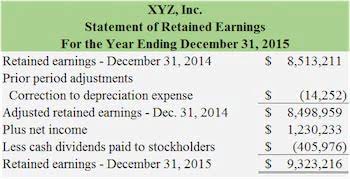
Get instant access to video lessons taught by experienced investment bankers. Learn financial statement modeling, DCF, M&A, LBO, Comps shares outstanding formula and Excel shortcuts. The larger stock market is made up of multiple sectors you may want to invest in. Get stock recommendations, portfolio guidance, and more from The Motley Fool’s premium services. If you’re going to become an investor, there are a few things you should know — like these formulas.

Weighted average shares outstanding is used as a substitute for the number of outstanding shares in some equations while calculating important financial ratios. Recognizing that a company’s number of shares outstanding can change is also useful. For example, the difference between the number of shares currently outstanding and the number of shares fully diluted is comparatively likely to be significant for fast-growing technology companies.
Outstanding shares include share blocks held by institutional investors and restricted shares owned by the company’s officers and insiders. A company’s number of outstanding shares is not static and may fluctuate wildly over time. Shares outstanding refers to the amount of stock held by shareholders, including restrictive shares held by company insiders.

The company has 4.32 billion authorized common shares, of which 3,119,843,000 have been issued as of December 31, 2014. Next, 336,620,000 shares were held in the company’s treasury at that time, so subtracting this from the number of issued shares means that Johnson & Johnson had 2,783,223,000 outstanding shares at the end of 2014. Of these terms, the two that you need in order to determine the number of outstanding shares are issued shares and treasury shares.
Each of these are further divided into subcategories based on different rights and preferences. Common stock is generally subdivided based on voting rights; for example, Class A common stock will have the right to vote, while Class B common stock will not. Preferred stock’s subdivisions are usually based on the various purchase prices, protective provisions, and other rights granted to the preferred stockholders. If there is a difference between the number of shares issued and outstanding, the difference is treasury stock. In other words, a company has issued shares and then bought some of the shares back, leaving a reduced number of shares that is currently outstanding. As a real-world example, here is some information from Johnson & Johnson’s (JNJ 0.17%) 2014 year-end balance sheet.

Shares outstanding refers to the number of https://www.bookstime.com/ shares of common stock a company has issued to investors and company executives. The number is used to calculate many common financial metrics, such as earnings per share (EPS) and market capitalization. Not to be confused with authorized shares, outstanding shares refer to the number of stocks that a company has issued. This number represents all the shares that can be bought and sold by the public, as well as all the restricted shares that require special permission before being transacted. As we already explained, shares that can be freely bought and sold by public investors are called the float. This value changes depending on whether the company wishes to repurchase shares from the market or sell out more of its authorized shares from within its treasury.

Outstanding shares is the total number of shares available in the secondary market. If you do not understand what are outstanding shares or how to calculate it, then this article is perfect for you. Because investors frequently purchase shares of a company at various times and in various amounts as they build their position in a stock, it can be a challenge to keep track of the cost basis of those shares. One method is for the investor to calculate a weighted average of the share price paid for the shares.
Issued stock is the total number of a company’s sold shares held by shareholders. Treasury shares are outstanding shares which are repurchased by the company for its own use. The weighted average number of outstanding shares in normal balance our example would be 150,000 shares. The company can increase or decrease the number of shares outstanding by issuing new shares or via share repurchases (buybacks).